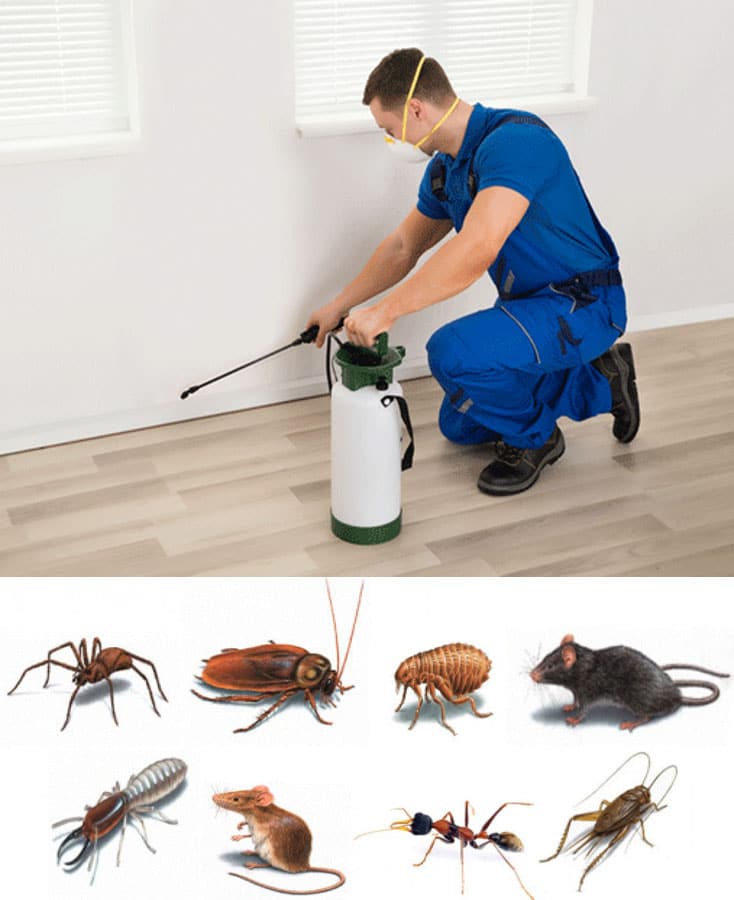Bed Pest Therapy Failure: Comparing Chemical Vs. Non-Chemical Solutions
In the world of pest control, especially when managing the persistent issue of bed bugs, the selection in between chemical and non-chemical treatment solutions can be an essential one. Both strategies offer distinct benefits and downsides, influencing variables such as efficiency, safety and security considerations, and total price. By checking out the nuanced details of each approach, a more clear understanding of which course to go after in attending to a bed pest problem can be acquired.
Performance of Chemical Treatments
Chemical therapies for bed insect infestations have been widely acknowledged for their fast and potent efficacy in getting rid of these pests. When taking into consideration the performance of chemical treatments, it is vital to understand that they can provide a extensive and fast remedy to a bed insect problem. Expert pest control specialists typically rely on pesticides to target bed bugs at numerous phases of their life cycle, including eggs, adults, and fairies. These chemicals typically function by interrupting the bed bugs' nerves, causing paralysis and ultimate fatality.
In addition, chemical therapies have the benefit of providing residual impacts, suggesting that they can continue to eliminate bed pests also after the preliminary application. This residual activity is especially helpful in combating any prospective re-infestations. In addition, the quick action of chemical therapies can bring alleviation to people encountering serious bed pest invasions, enabling them to regain control of their living spaces promptly.
Safety Worry About Chemical Solutions
One critical aspect that needs cautious consideration when using chemical services for bed pest therapy is making sure the safety of residents and the atmosphere. Exposure to certain chemicals made use of in bed pest treatments can lead to breathing concerns, skin irritation, or other adverse responses, especially in individuals with pre-existing problems or level of sensitivities.
Additionally, the environmental impact of chemical remedies is one more significant factor to consider. Some pesticides utilized in bed insect therapies might be damaging to helpful bugs, wild animals, and communities if they leach right into the soil or water systems. It is crucial to make use of chemical treatments sensibly, complying with security standards, and thinking about less toxic options to reduce these dangers and make certain the risk-free and efficient management of bed insect infestations.
Benefits of Non-Chemical Techniques
Considering the potential security worries and environmental effect associated with chemical services for bed pest therapy, discovering non-chemical approaches provides a promising choice with numerous distinct benefits. Non-chemical approaches offer a safer option for homes, specifically those with people, children, or family pets conscious rough chemicals. These strategies remove the threats of direct exposure to poisonous compounds, lowering the capacity for adverse health effects. Additionally, non-chemical treatments are eco pleasant, as they do not contribute to air or water pollution, making them a lasting option for bug control.
Additionally, non-chemical solutions can be effective in targeting bed pests, consisting of hard-to-reach areas where chemical treatments might not permeate. Approaches such as heat treatment, vacuuming, heavy steam cleaning, and bed mattress coverings give comprehensive obliteration without the use of damaging chemicals. Furthermore, non-chemical techniques can be much less disruptive, requiring very little preparation and enabling quicker reentry right into treated locations. On the whole, going with non-chemical bed bug treatment approaches not just focuses on safety and environmental management yet additionally makes certain effective and thorough bug control.
Limitations of Non-Chemical Treatments

Furthermore, non-chemical treatments often call for several applications to accomplish effective eradication. This can be lengthy and may not always guarantee total removal of all bed insects and their eggs, specifically in hard-to-reach or hidden locations.
Additionally, the success of non-chemical treatments heavily counts on proper implementation and thoroughness, which can be testing for people without expert experience. Poor application of non-chemical approaches might lead to insufficient obliteration, causing persistent invasions and the need for extra treatments.
As a result, while non-chemical treatments have their advantages, it is important to acknowledge these constraints and consider them when identifying one of the most efficient strategy for handling bed insect invasions.
Price Comparison: Chemical Vs. Non-Chemical Options
Offered the constraints connected with non-chemical treatments, a necessary element to review in the context of bed bug monitoring is the price comparison in between chemical and non-chemical choices. Chemical therapies normally entail the application of pesticides by experts, which can vary from $250 to $900 per room, depending on the extent of the infestation and the dimension of the location to be dealt with. On the other hand, non-chemical treatments like warm therapy or heavy steam can be extra pricey, with expenses varying from $1,000 to $6,000 for a whole home. While the initial price of chemical treatments might seem lower, several therapies might be called for to fully remove the infestation, potentially increasing the general expense. On the other hand, non-chemical original site alternatives may provide a more environmentally friendly and sustainable option, although they can be cost-prohibitive for some individuals. Inevitably, when thinking about the expense of bed bug treatment alternatives, it is very important to evaluate the ahead of time expenditures against the performance and long-lasting sustainability of the picked approach.
Verdict

Taking into consideration the possible safety issues and environmental influence linked with chemical services for bed bug treatment, discovering non-chemical approaches provides an appealing option with a number of distinctive benefits.Provided the restrictions linked with non-chemical treatments, an essential facet to examine in the context of bed bug monitoring is the cost comparison in between chemical and non-chemical choices. In comparison, non-chemical therapies like warmth treatment or steam can be more expensive, with expenses varying from $1,000 to $6,000 for a whole home. While the first price of chemical treatments might appear lower, multiple treatments may be called for to completely eliminate the infestation, potentially increasing the general cost.In conclusion, when hop over to here comparing chemical and non-chemical bed pest treatment choices, it is vital to consider effectiveness, security, benefits, restrictions, and expense.